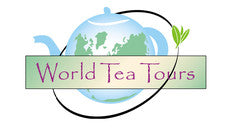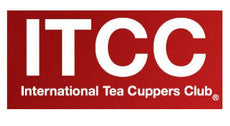02 Nov 2011
By Babette Donaldson, World Tea News Contributor
For some tea people, a tea career is a family legacy. For others, like Dan Robertson, it began with an epiphany — a life altering experience.
“In 1994 I was in Wuyishan being served tea by three beautiful women. I was captivated by the delicate preparation and their precise movements. They took their time while I enjoyed the elegant ritual and the views of the mountains in the background and I realized that it could have been a thousand years before that day and I would have been served the same tea in exactly the same way,” says Robertson. “Before I accepted my first cup of the tea I realized that I wanted to be part of this. It was satisfying and fulfilling — an enduring way of life.”
This was an unexpected result of a 25-year career in martial arts that included many years studying the Chinese language. The visit was the culmination of two years of tea research. In 1994 Robertson first traveled to
“There were very few books on tea back then so I also contacted the leading tea companies finding Samuel Twinings, Peter Goggi of Lipton and The Republic of Tea most helpful,” he says.
The Chinese were gracious, “allowing me unprecedented access to their experts and tea gardens, especially Huang Hanqing, president at the time of the Shanghai Tea Import/Export Corp. and Chang Jiwei who was VP of Yunnan Tea import/Export Corp.”
Officials in
The experience turned his career path from videographer to tea importer, wholesaler, retailer, educator and tea tour guide. On his return Robertson started two businesses: The Tea House and World Tea Tours.
“When we travel we experience how critical tea is to other cultures,” he explains. “Tea is the social grease that allows people’s lives to roll and turn. It is a lubricant to social interaction of all kinds,” says Robertson.
The experience led him to a better appreciation of the many new U.S tea customers seeking tea products and experiences they’re discovering on their own global travels. Robertson says retailers need different ways to keep up with the growing demand for education and quality offerings.
“Twenty-five years ago our tea tastes were limited to a British style tea and Southern iced tea. We’ve watched this evolve to where people started asking for
He adds that a tea education is complex, that the art of tea and varied perspectives from different countries of origin keep us from finding comfortable cubby holes to categorize artisan teas. “For instance,
As a tea professional who began in the industry when tea education was largely self-designed by aligning with mentors and seeking out tasting experiences, Robertson has an appreciation for the tools we now have through STI and World Tea Expo.
But when asked to define a tea education, his answer was surprisingly simple: “Time.”
“I’ve just been around for a long time. I’ve bumped into people and traveled to places searching out opportunities to gather more tea knowledge,” says Robertson.
When wearing his retailer cap in his storefront, The Tea House in Naperville, Ill., he simplifies the introduction to the world of tea and greets newcomers with the three basic tea groups; green, oolong and black. Robertson seeks to match a selection with what the customer is seeking in flavor and experience. Wholesale customers, on the other hand, benefit from Robertson’s experience with growers whom he has followed for almost 20 years.
“Retailers must develop a broader knowledge base so they can address their customers’ varied tastes. It all comes down to how the tea tastes and what the consumer wants,” says Robertson.
His commitment to quality education for the tea community led him to create two new experiences this year. The first is a series of immersion studies where students remain for an extended time on a single plantation during the height of the production season.
The second is a tea tasting club known as the International Tea Cuppers Club, where growers send samples of teas from their farms to ‘cupping members’ who follow a professional protocol and return feedback to the growers and members.
“We (tea retailers and educators) must develop an appreciation for the subtle effects of climate and the more intentional creativity through manufacturing,” Robertson explains. It is his belief that establishing a direct link back to the farms will be a valuable tool to retailers and consumers of artisan teas.
“It has been an honor and a privilege to return to the sources every year and to share this experience with others,” he said before departing to guide his current tour to






